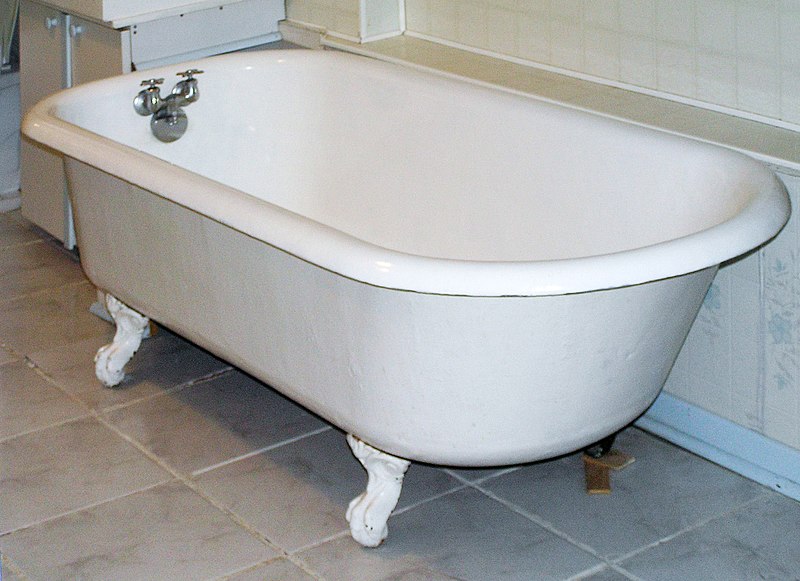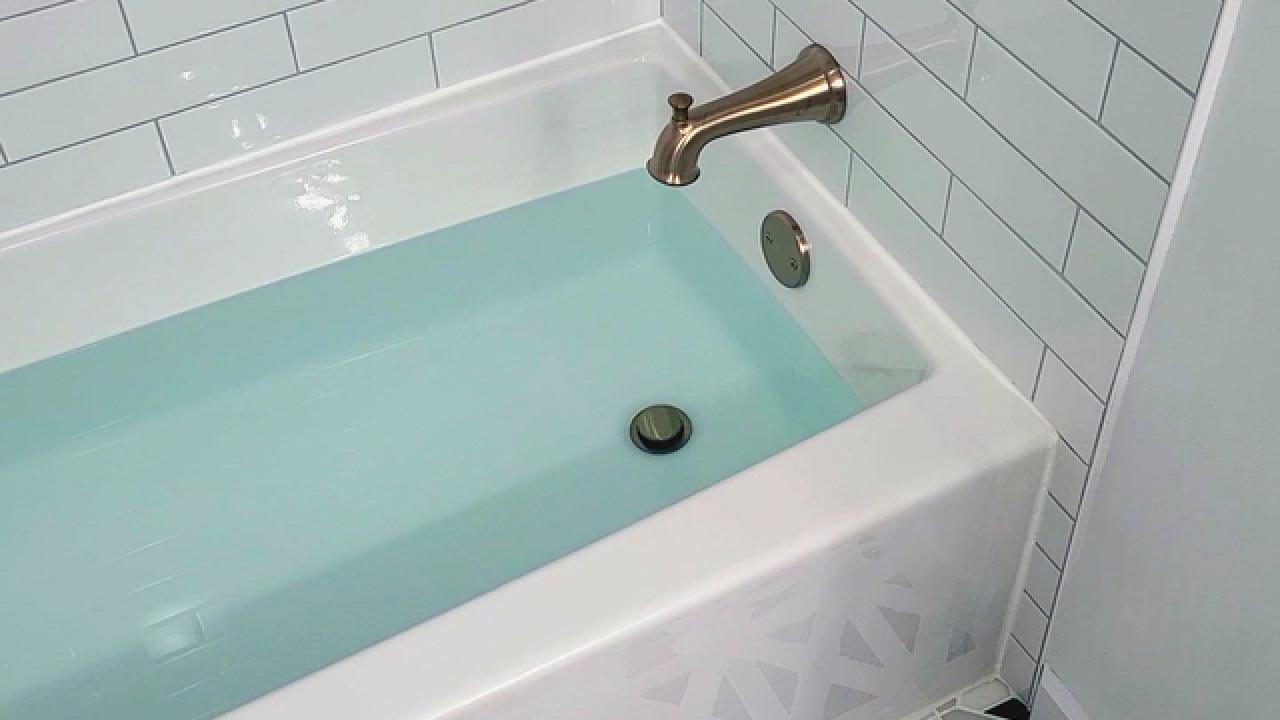We have stumbled on this article pertaining to A Step-by-Step Guide to Installing a Bathtub below on the web and concluded it made sense to talk about it with you on my blog.

Installing a tub isn't specifically rocket science, however it does need strong plumbing, carpentry, as well as occasionally, tiling skills. Changing an old bath tub with a new one is additionally a reasonably challenging project. If the old bathtub is readily obtainable, the project can move immediately; if you need to open a wall surface to remove the old bathtub as well as position the brand-new bath tub, the task is a lot harder. In either case, the project is within a home handyman's abilities, although you will certainly require a helper to leave the old tub as well as embeded in the new one. Make sure you have actually certified yourself for the job and also are comfortable trying it. Instead of working with a contractor to take control of a halfway-completed project, it is far better to take into consideration employing one before you start. Opportunities are you may require an expert plumber to make tube links.
This article will help you set up a brand-new bath tub in your bathroom if you have actually already acquired a new bathtub as well as do not require to change the setup of your previous water supply pipes.
Your devices as well as product checklist must make up the following:
Planning for the Installation
To start with, the sustaining structure provided with the bathroom needs to be fitted (if called for) according to the maker's directions. Next, fit the taps or mixer to the bath tub. When suitable the faucet block, it is necessary to make sure that if the tap features a plastic washer, it is fitted between the bath and also the taps. On a plastic bathroom, it is also sensible to fit a supporting plate under the faucets unit to stop stress on the bath tub.
Fit the versatile faucet connectors to the bottom of both faucets using 2 nuts and also olives (occasionally provided with the bathtub). Fit the plug-hole outlet by smearing mastic filler round the sink electrical outlet opening, and afterwards pass the outlet with the hole in the bathroom. Utilize the nut provided by the maker to fit the plug-hole. Take a look at the plug-hole electrical outlet for an inlet on the side for the overflow pipeline.
Next off, fit completion of the versatile overflow pipeline to the overflow electrical outlet. Afterwards, screw the pipeline to the overflow face which need to be fitted inside the bathroom. Make certain you utilize all of the supplied washing machines.
Link the catch to the bottom of the waste electrical outlet on the bathtub by winding the string of the waste electrical outlet with silicone mastic or PTFE tape, and screw on the catch to the outlet. Attach all-time low of the overflow tube in a similar manner.The bathroom ought to currently prepare to be suited its last setting.
Removing Old Touches
If you require to replace old taps with new ones as a part of your setup, after that the first thing you should do is detach the water. After doing so, switch on the taps to drain pipes any type of water continuing to be in the system. The process of getting rid of the existing taps can be rather bothersome due to the limited accessibility that is usually the instance.
Use a basin wrench (crowsfoot spanner) or a tap tool to reverse the nut that attaches the supply pipes to the taps. Have a fabric ready for the remaining water that will come from the pipelines. As soon as the supply pipes have actually been removed, utilize the same tool to loosen the nut that holds the faucets onto the bath/basin. You will certainly require to stop the single taps from transforming during this procedure. Once the faucets have been eliminated, the holes in the bath/basin will certainly have to be cleaned of any kind of old securing substance.
Prior to moving on to fit the brand-new taps, contrast the pipeline links on the old faucets to the brand-new faucets. If the old faucets are longer than the new faucets, then a shank adapter is required for the brand-new faucets to fit.
Mounting the Bathtub
Utilizing both wooden boards under its feet, place the bathtub in the needed position. The wood boards are useful in uniformly spreading the weight of the bathtub over the location of the boards instead of concentrating all the weight onto 4 small points.
The next objective is to ensure that the bathtub is leveled all round. This can be accomplished by checking the level and also readjusting the feet on the tub until the level checks out degree.
To install taps, fit all-time low of the furthest versatile faucet port to the appropriate supply pipeline by making a compression sign up with; then do the very same for the other tap.
Switch on the water system as well as check all joints and brand-new pipework for leaks as well as tighten them if needed. Load the bath tub as well as additionally check the overflow electrical outlet as well as the typical electrical outlet for leakages.
Ultimately, fix the bath paneling as defined in the manufacturer's instruction manual. Tiling and also securing around the bathtub must wait till the bathtub has been used at least once as this will certainly resolve it into its last position.
Fitting New Taps
If the tails of the brand-new faucets are plastic, then you will need a plastic connector to prevent damages to the thread. One end of the adapter fits on the plastic tail of the tap and the other end provides a link to the existing supply pipes.
If you require to fit a monobloc, then you will need minimizing couplers, which links the 10mm pipeline of the monobloc to the conventional 15mm supply pipeline.
Next off, place the faucet in the installing hole in the bath/basin guaranteeing that the washing machines remain in place in between the tap and the sink. Safeguard the faucet in place with the maker provided backnut. As soon as the tap is securely in position, the supply pipelines can be linked to the tails of the faucets. The faucets can either be linked by using corrugated copper piping or with normal tap ports. The previous kind must be connected to the faucet ends first, tightening only by hand. The supply pipes can later on be connected to the various other end. Tighten both ends with a spanner after both ends have actually been linked.
Tiling Around the Bath tub
In the area where the bath meets the tile, it is required to seal the joins with a silicone rubber caulking. This is necessary as the installation can move sufficient to crack a rigid seal, creating the water to permeate the wall between the bath and the tiling, causing issues with wetness as well as feasible leakages to the ceiling listed below.
You can pick from a range of coloured sealers to assimilate your fixtures and also installations. They are sold in tubes as well as cartridges, and are capable of sealing voids approximately a width of 3mm (1/8 inch). If you have a larger void to fill, you can load it with twists of soaked newspaper or soft rope. Keep in mind to always load the bathtub with water before securing, to allow for the motion experienced when the tub remains in use. The sealer can break fairly early if you do not think about this motion before securing.
Alternatively, ceramic coving or quadrant floor tiles can be made use of to border the bathroom or shower tray. Plastic strips of coving, which are easy to use as well as cut to dimension, are likewise quickly offered on the market. It is recommended to fit the tiles making use of water-resistant or waterproof sticky and cement.
Bathtub Installation
How Important Is A Bathtub To Your Home?
High-quality baths, showers, and other bathroom updates are necessary when considering a smart investment in your home. It’s a room that you go to every day and one that is constantly being used by guests.The bathroom is one of the top trafficked rooms in a home and also one of the most valuable in terms of home resale.
Install Piping Before Tub
You will be using your existing drain and waste vent system, but pipes required include the hot and cold water supply lines and a pipe leading to a shower head. A mixing valve and shower head are also needed. Air chambers may be required.
Position the Tub
Lower the tub into place so that the continuous flange fits against the wall studs and rests on 1’x4' or 2’x4' supports. Anchor the tub to the enclosure with nails or screws inserted through the flanges into the studs.
NOTE: Remember, bathtubs and shower stalls may require support framing. A bathtub filled with water is extremely heavy, so check building codes and framing support before installing the tub.
Assemble Drain Connections
Assemble the bathtub drain connections by connecting the tub overflow with the tub drain above the trap, not beyond it. The trap will have a compression fitting that screws over the arm of the overflow assembly.
Place a Pipe For the Shower Head
First, locate a brass female threaded winged fitting and attach it to a framing support via a screw or a nail. Then run a pipe up the wall for the shower head. Sweat or solder the other side of the brass fitting to the top of the pipe.
Attaching Hot and Cold Water Lines
Attach your water lines for both hot and cold by sweating these directly into the hot and cold ports of the mixing valve. The mixing valve will be how water enters the tub’s system, not by the pipes themselves.
Install the Spout
Extend a piece of 1/2 inch pipe, or whichever length is specified in the manufacturer’s instructions, for the tub spout. Sweat on a male threaded fitting at the end of the pipe or use a brass nipple of the proper length and a 1/2 inch cap.
NOTE: At this point you should have your rough-in plumbing work inspected before proceeding further.
Check For Leaks
Restore the water pressure and check the drain connection and the supply pipes for any sign of leaking.
estore the Bathroom Wall
Replace the wall with moisture-resistant drywall as a base for your wall covering. Seal the joints between the wall and your new tub with silicone caulk as protection against water seepage.
https://www.berkeys.com/2016/12/02/bathtub-installation-dallas/

Do you really like reading about How to Install a Bathtub? Create a review further down. We will be glad to listen to your thoughts about this blog post. We are looking forward that you come back again later on. Sharing is nice. One never knows, you might be helping someone out. I value reading our article about A Step-by-Step Guide to Installing a Bathtub.
Best in business.